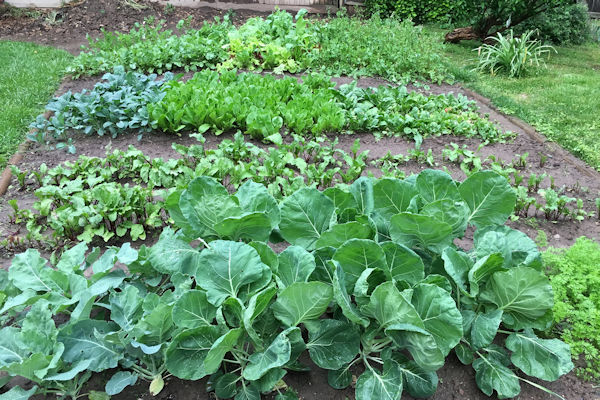SEJournal Online is the digital news magazine of the Society of Environmental Journalists. Learn more about SEJournal Online, including submission, subscription and advertising information.
 |
| Temperatures matter for backyard gardeners, making climate change reporting a smart way to reach those readers. Photo: woodleywonderworks, Flickr Creative Commons. Click to enlarge. |
Reporter’s Toolbox: Seeding Climate Stories in the Backyard Garden
By Joseph A. Davis
Any avid gardeners in your audience? If you’re an environmental journalist, there likely are. And if so, it’s a great opportunity to offer timely info about climate change — especially because the government isn’t always helpful in advising gardeners what, where and when to plant.
Gardeners know that temperature matters to plants. And environmental journalists know that the climate crisis is changing temperature regimes. So even if it’s not spring yet, gardeners will be poring over seed catalogs and putting in their orders (especially with what looks like pandemic-demand-driven bottlenecks).
So it’s a good time to get on the garden-climate connection story. But first it’s helpful to know how exactly temperature matters to plants.
The depth of the winter freeze is one way. A deep enough freeze may kill a gardener’s rosemary or a fig tree that they hope will be perennials.
The USDA divides areas of the country
into 10-degree F zones based on the
average annual minimum winter temperature.
“Hardiness” is the quality of a plant that allows it to survive, with some plant varieties bred for more hardiness. Gardeners need to know what hardiness zone they’re in before choosing a variety. So the U.S. Department of Agriculture divides areas of the country into 10-degree F zones based on the average annual minimum winter temperature.
Soil temperature matters too. Most seeds won’t germinate until soil warms to a certain temperature. That’s why seeds are often started in greenhouses or indoors, before being replanted outdoors. Or temperature may affect when a plant blooms.
Hardiness zone map outdated?
For all these considerations, the hardiness zones are a good rough guide. So the USDA has historically issued a plant hardiness zone map that might offer the gardeners in your audience some answers.
The climate seems to be changing even
faster than the Ag Department — the
hardiness zone map was last updated in 2012.
The problem? The climate seems to be changing even faster than the Ag Department — the map was last updated in 2012. That’s in part because revisions to the map are controversial. They tend not to get done during administrations less focused on climate change.
But here’s a spoiler alert: the zones have been shifting northward. So at least the good news is that that rosemary might live through the winter.
Want a more up-to-date zone map that reflects the warming climate? The Arbor Day Foundation published their own map in 2015, updating it with data from 5,000 National Climatic Data Center cooperative stations across the continental United States.
But if you do want to work with the latest official USDA map, know that it is a graphical representation of a lot of data that can be viewed by zip code or state (so that once a gardener knows what zone or subzone they are in, they can look at those seed packets for planting instructions). The wonkier among us can also download some of its data sources here.
Story sources
- Visit the USDA’s Agricultural Research Service, which is responsible for the hardiness zone map.
- Check in with your county’s Cooperative Extension Service office. Use this zipcode lookup service.
- Visit local nurseries and ask to talk to their expert staff.
- Attend meetings of local garden clubs and ask people about their experiences with frost, germination, varieties, etc.
- Go to a local community garden, look at their bulletin board, attend a meeting and talk to experienced gardeners in the field.
Joseph A. Davis is a freelance writer/editor in Washington, D.C. who has been writing about the environment since 1976. He writes SEJournal Online's TipSheet, Reporter's Toolbox and Issue Backgrounder, as well as compiling SEJ's weekday news headlines service EJToday. Davis also directs SEJ's Freedom of Information Project and writes the WatchDog opinion column and WatchDog Alert.
* From the weekly news magazine SEJournal Online, Vol. 6, No. 6. Content from each new issue of SEJournal Online is available to the public via the SEJournal Online main page. Subscribe to the e-newsletter here. And see past issues of the SEJournal archived here.













 Advertisement
Advertisement 



